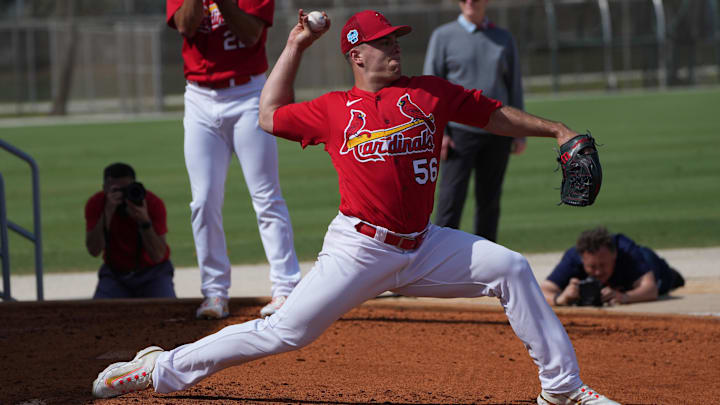4. Starting pitching is back for the Cardinals.
The Cardinals had one of the worst rotations in baseball last year. As a staff, Cardinal starters had the 5th-worst ERA, 4th-worst WHIP, and the 2nd-worst batting average against. Going into last season, fans knew the rotation would struggle and be the weakest positional group, but the results were much more jarring than originally expected.
Entering Thursday's games in spring (excluding Kyle Gibson's struggles), Cardinal starting pitchers have thrown a total of 12 innings. They have a 1.50 ERA (2 earned runs), a 1.17 WHIP, and a .190 batting average against. Each of these figures is noticeably improved from last year's totals.
Sonny Gray, Zack Thompson, Miles Mikolas, Matthew Liberatore, Tekoah Roby, and Sem Robberse have all made starts for the Cardinals. While Gray and Mikolas figure to be in the rotation next year, Thompson and Liberatore are battling for bullpen roles or future starting pitchers on the team. Starters have been capped at 2 innings pitched up to this point, but the stats thus far have been encouraging from those who will pitch the most innings on the team.
Lance Lynn and Steven Matz will surely make their first spring appearances sometime in the next week. The hope for the 2024 rotation is that they will get enough quality innings to offset any concerns about age or uninspiring statistics from last year.
Sonny Gray will contend for the Cy Young Award as he is prone to do regardless of the league he pitches in, and Matz and Mikolas could turn back the clock a few years to fill in the middle of the rotation. While a 1.50 ERA in only 12 innings isn't realistic for this rotation, statistics better than the bottom of the league for starters is achievable.
